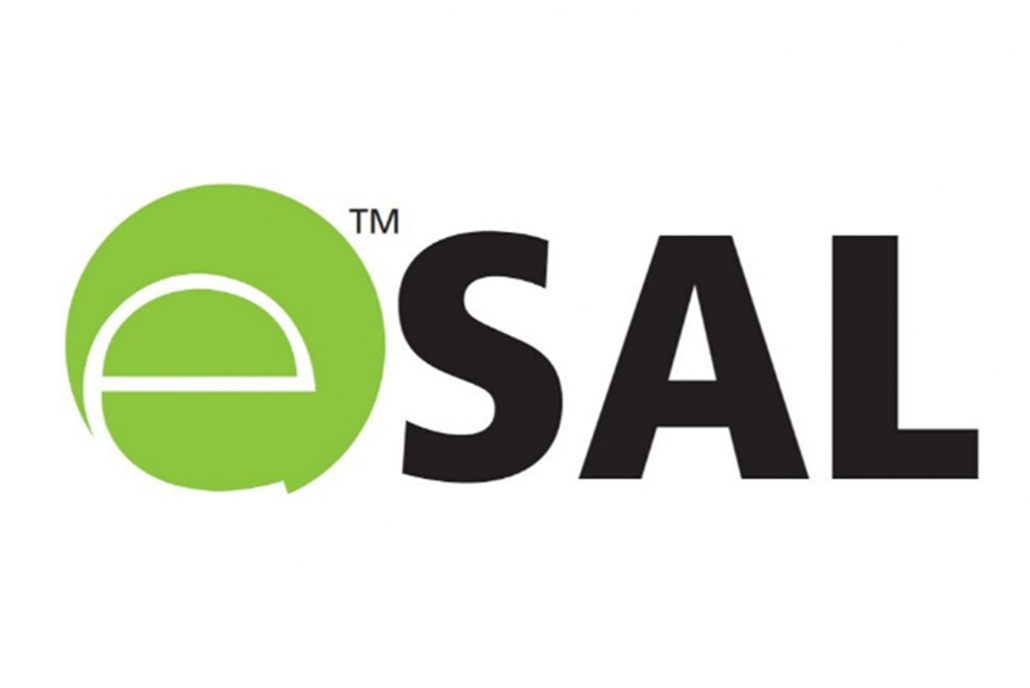Shipping to the US market is a crucial aspect of global trade, offering countless opportunities for businesses around the world. However, to successfully tap into this market, it’s essential to be well-informed about the key considerations involved.
In this article, I explore various aspects of shipping to the US, including thresholds, tax implications, parcel size, trade agreements, restricted items, labelling and packaging requirements, documentation, transit times, and the challenges posed by competitors.
Thresholds
One of the first considerations when shipping to the US is understanding customs thresholds. These thresholds determine the point at which import duties and taxes become applicable.
The de minimis value for the US is set at $800 USD, which means shipments valued at or below this amount are generally exempt from customs duties and taxes. This threshold can vary for certain products, so it’s essential to stay informed about any updates.
At AMS, we pride ourselves on our in-depth understanding of these thresholds, ensuring a streamlined process for your parcel delivery. We navigate the intricacies of customs regulations, keeping you informed and confident every step of the way.
Tax
If you are a business based in Australia and you are exporting goods to the USA, the sale of goods is generally considered a “taxable supply” for GST purposes. However, exports of goods are typically treated as GST-free supplies. This means that you don’t charge GST on the sale of goods to the USA.
You may be eligible for GST refunds (input tax credits) on expenses related to exporting the goods.
While you may be exempt from Australian GST, when your goods arrive in the USA, they may be subject to customs duties, import taxes, and other fees. These charges can vary based on factors such as the type of goods, their value, and their country of origin. The Harmonized System (HS) code and the value of your goods are used to determine the applicable duties and taxes.
The United States International Trade Commission (USITC) or U.S. Customs and Border Protection (CBP) can provide specific information about duties and taxes applicable to your goods.
Parcel Size
The size and weight of your parcels can significantly impact shipping costs and logistics. Shipping carriers often use dimensional weight (DIM weight) to calculate shipping costs, which is based on a package’s size and weight. It’s important to optimise packaging to minimise shipping expenses.
Different shipping methods may have restrictions on parcel size and weight. Air freight and express services, for example, may have more stringent size and weight limits compared to ocean freight.
Depending on your specific requirements, you may need to choose a shipping method that can accommodate your parcel size. Smaller parcels may be more suitable for air cargo, while larger shipments may be better suited for ocean freight.
Trade Agreements
Knowledge of trade agreements and regulations is crucial when shipping to the US, such as NAFTA. The North American Free Trade Agreement has been replaced by the United States-Mexico-Canada Agreement (USMCA), which offers preferential trade terms for goods originating in these countries.
It’s important to note that Australia is not a party to the agreement. The USMCA primarily involves the United States, Mexico, and Canada. As such, the direct impact on Australians would be limited.
However, trade agreements can have indirect effects on global trade dynamics. Changes in trade terms and regulations between major trading partners, such as the U.S., Mexico, and Canada, can influence global economic conditions, commodity prices, and supply chains. These, in turn, may have consequences for countries like Australia, which engage in international trade.
Consider any tax treaties between Australia and the USA. These treaties can impact the taxation of specific types of income or transactions. While they may not directly affect customs duties, they could influence your overall tax obligations.
Restricted Items
Certain items are restricted or prohibited from being imported into the US. Familiarise yourself with the U.S. Customs and Border Protection’s list of prohibited and restricted items to avoid legal complications. This can include items such as:
| Agricultural Products | • Fruits and vegetables • Plants and plant products • Animal products • Soil and certain organic materials |
| Firearms and Ammunition | • Firearms and ammunition • Explosives and explosive materials |
| Endangered Species and Wildlife Products | Products made from endangered species, such as ivory, exotic animal skins, and certain exotic woods |
| Chemicals and Hazardous Materials | • Hazardous chemicals • Pesticides and herbicides |
| Food and Dietary Supplements | • Food additives • Dietary supplements |
| Textiles and Apparel | Counterfeit clothing and accessories |
| Electronic Devices | • Products not complying with electromagnetic interference (EMI) regulations • Counterfeit electronics |
| Toys and Children’s Products | • Toys that contain hazardous materials • Products not meeting child safety regulations |
| Vehicles and Parts | • Imported vehicles not conforming to safety and emissions standards • Non-compliant vehicle parts |
| Nuclear Materials and Equipment | • Nuclear materials and technology subject to export controls |
| Medical Devices and Equipment | Medical devices not meeting safety and quality standards |
| Aircraft and Aircraft Parts | Aircraft and aircraft parts that do not meet safety and quality standards |
| Cultural and Historical Items | Items of cultural or historical significance subject to export or import restrictions |
| Technology and Encryption | Export-controlled technology and encryption products |
| Consumer Products | Household appliances and products not meeting safety and energy efficiency standards |
Transit Times
Understanding transit times is crucial for both businesses and customers when managing shipments from Australia to the United States. For instance, AMS offers a shipping timeframe of 4-5 business days. This information is vital for managing customer expectations and optimising supply chain efficiency.
When selecting a shipping method, it’s essential to consider both your budget and timeline. Expedited services, though often more expensive, provide faster transit times. This can be especially beneficial for time-sensitive shipments or products with a short shelf life.
By choosing the right shipping method, businesses can enhance customer satisfaction, reduce the risk of delays, and ensure products reach their destination in a timely manner. It’s a balancing act between cost and speed, and understanding the available shipping options is key to making informed decisions in the world of international trade.
Tracking Visibility
In addition to its competitive shipping time of 4-5 business days, AMS goes a step further by offering complete oversight through real-time tracking for both customers and operations teams. This level of transparency is a game-changer in the world of international shipping.
Providing tracking information not only keeps customers informed about the whereabouts of their shipments but also enhances their overall experience and trust in your service. Having complete oversight allows businesses to anticipate and address potential issues, manage inventory effectively, and streamline overall logistics operations.
Choosing a shipping partner like AMS, which combines efficient transit times with advanced tracking features, can significantly elevate the customer experience and contribute to the success of your e-commerce business
Labelling/Packaging Requirements
Proper labelling and packaging are essential for successful shipping. Ensure compliance with labelling requirements, including product origin, ingredients, and safety labels, to prevent customs delays or rejections.
Labelling standards in the United States are regulated by various federal agencies, depending on the type of product being sold. Accurate and compliant labelling is essential to ensure consumer safety, provide product information, and meet legal requirements.
Here’s an overview of labelling standards and requirements in the U.S.:
| Category | Standards/Requirements |
| Food Labelling (FDA) | Nutrition Facts Label: Food products are required to display a standardised Nutrition Facts label that provides information on serving size, calories, nutrients, and ingredients. Ingredient List: The label must include a list of all ingredients in descending order of predominance. Allergen Declarations: Allergens must be clearly identified, typically in bold or through other conspicuous means. Food Allergen Labelling and Consumer Protection Act (FALCPA): Requires disclosure of common food allergens. Health Claims and Nutrient Content Claims: These claims are regulated and must meet specific criteria. |
| Pharmaceutical and OTC Drugs (FDA) | Drug Facts Label: Drug products must include a Drug Facts label, providing information on uses, warnings, dosage, and active ingredients. NDC (National Drug Code) Number: Each drug product is assigned a unique NDC number for tracking and identification. |
| Cosmetics (FDA) | Ingredient List: Cosmetics must have an ingredient list on the label. Warning Statements: Certain cosmetic products may require warning statements for safe use. |
| Textile and Apparel Labelling (FTC) | Fibre Content Labelling: Labels must specify the fibre content of textiles and apparel. Care Labelling: Care instructions (washing, drying, ironing, etc.) must be provided. |
| Electronics and Appliances (FCC, DOE) | EnergyGuide Labels: Appliances must display EnergyGuide labels that provide energy consumption information. FCC Compliance Statements: Electronic devices must include FCC compliance statements indicating that the product complies with electromagnetic interference (EMI) regulations. |
| General Consumer Products (CPSC) | Choking Hazard Warnings: For products that pose a choking hazard to young children. Safety Labels: Products subject to specific safety requirements must include safety labels. |
| Pesticides (EPA) | Pesticide Registration Number: Pesticide labels must include the EPA registration number. Usage Instructions and Warnings: Labels must provide detailed usage instructions and safety warnings. |
| Medical Devices (FDA) | Unique Device Identifier (UDI): Medical devices require a UDI on their label for tracking and identification. |
| Dietary Supplements (FDA) | Supplement Facts Label: Similar to the Nutrition Facts label for food, dietary supplements require a Supplement Facts label. |
| Textiles and Apparel (Non-Compliance) | Textile products that don’t meet labelling and safety standards |
| Documentation | Commercial Invoice: Provide detailed commercial invoices with accurate descriptions and values of the products being shipped. Bill of Lading: Ensure proper documentation with a bill of lading that accurately describes the goods and their origin. |
Documentation and compliance
Proper documentation, including commercial invoices, bills of lading, and customs declarations, is essential to facilitate the smooth movement of goods across borders and to ensure compliance with tax regulations in both countries.
Navigating the complexities of international trade involves compliance with various tax laws and regulations. To ensure adherence to these legal requirements, businesses should consult with a customs broker or a tax professional specialising in international trade. These experts can provide valuable insights into the specific tax obligations related to cross-border transactions, helping businesses stay compliant and avoid potential legal issues.
AMS handles all duties, taxes, and import costs associated with international shipments. This not only simplifies the shipping process for businesses but also provides a transparent cost structure for customers.
AMS’s commitment to managing all duties, taxes, and import costs not only streamlines the logistics of shipping but also contributes to a hassle-free experience for both businesses and customers. This level of service can be particularly advantageous for businesses looking to expand their global reach while ensuring compliance with the intricacies of international trade regulations.
Shipping to the US market offers vast opportunities, but it comes with its unique challenges. By considering the key metrics mentioned above, businesses can navigate the complexities of customs, taxes, and regulations, ensuring a successful entry into this lucrative market. Staying informed, being prepared, and adapting to changing regulations will be key to your success in the US market.
Looking to ship to the US and open your brand to new market opportunities? Reach out to AMS in**@am********.au for a streamlined process.








